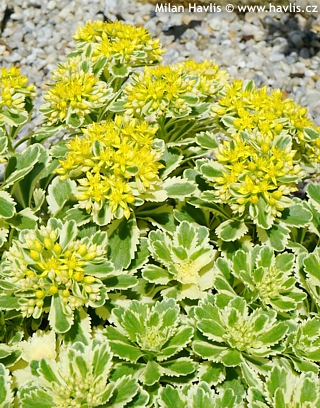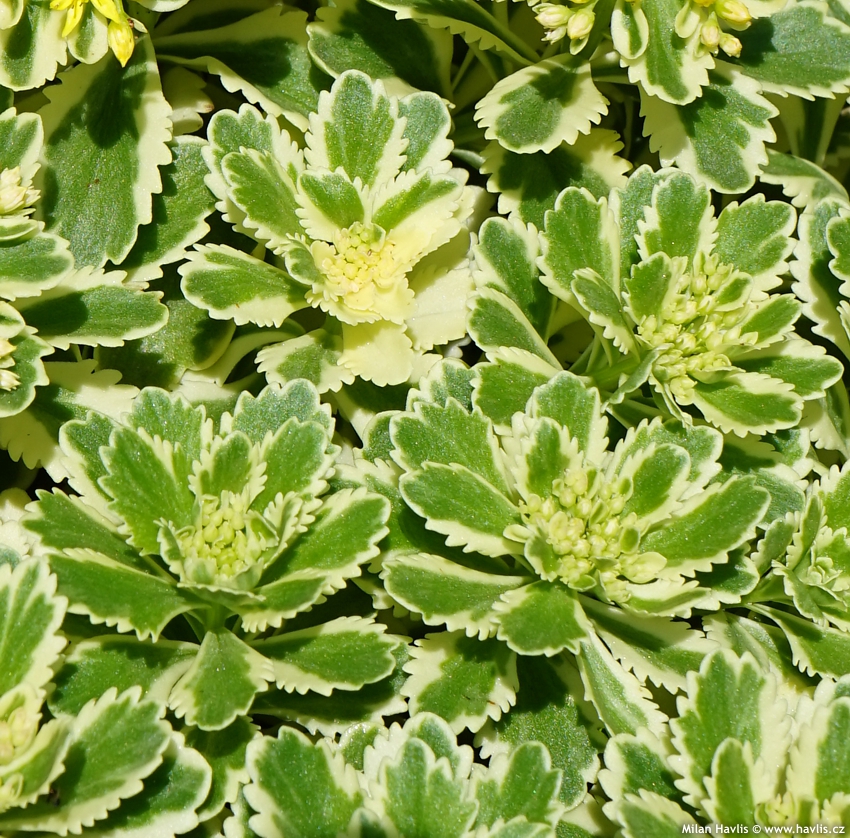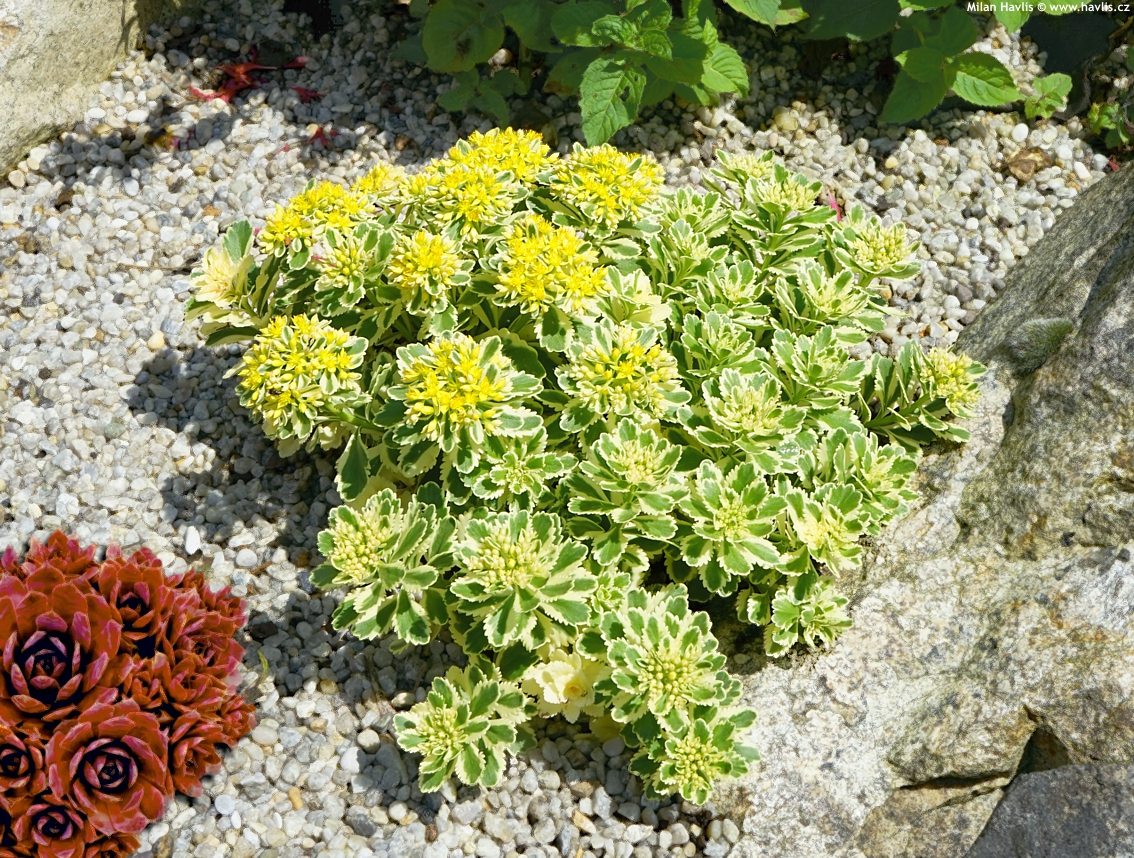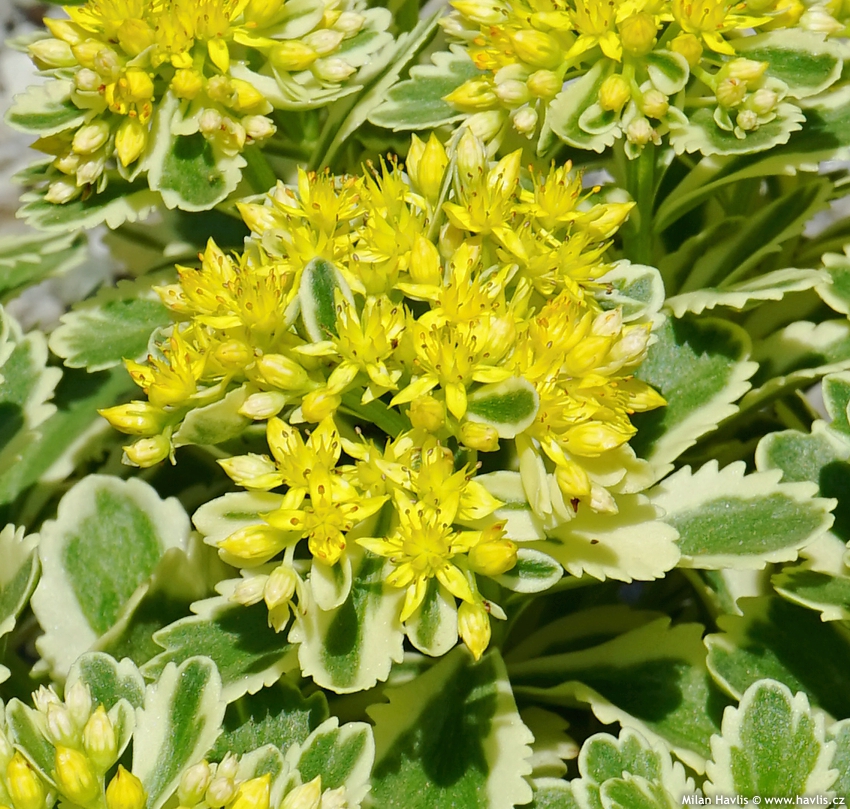Sedum takesimense 'Nonsitnal' ATLANTIS Korean stonecrop
Sedum
Ground covering stonecrops are alpine perennials which are available in so many species and varieties that anyone can find his favourite. They are cultivated for the spreading, low habit, and offer a wide range of leaf shapes and colours, as well as attractive flowers. Many of them are evergreen, others are deciduous. Groundcovering species are also botanically called Phedimus in order to separate them from other species with different features.
Korean stonecrop was first described by Japanese botanist Takenoshin Nakain at the beginning of the 20th century. It is a groundcovering species with thick foliage and small flowers. The new variety ATLANTIS was easy to find because this species never made variegated foliage before. It was a natural mutation of Gold Carpet variety discovered by Norberto Miguel Roma, a worker in a Hortech nursery in Nunica, Michigan, USA. He was not a breeder or a plant hunter, yet he recognized potential in the new plant and decided to propagate it over and over. When the plants proved stable Hortech Inc. patented the variety stating Norberto’s name as a proud inventor. Patent PP27454 was granted in 2016. Since then the plant collected many awards: Domaine de Chantilly Mérite 2018, Chelsea Plant of the Year 2019, Silver Medal Plantarium 2019
ATLANTIS stonecrop has highly attractive variegated foliage – its deciduous leaves are pale green with creamy white margins, some leaves are entirely white to pale yellow. In early summer (July) appear flat umbels of small, star-shaped, canary yellow flowers for 6-8 weeks which provide excellent food for winged insects.
It makes neat, compact, low cushions, and looks great among rocks, or surrounded by white or light grey gravel in an alpine border. It is suitable for troughs and other outdoor pots. In early spring remove all stems from previous year.
Sedum is an easy to grow, clump-forming perennial. It can take almost any soil but thrives in well-drained, slightly alkaline, sandy loam in full sun or part shade. When established it survives temporary flooding as well as drought. However, when planting make sure the soil does not manifest either extreme. Fully hardy to min. -34°C (USDA zone 4).
Last update 19-07-2020







































